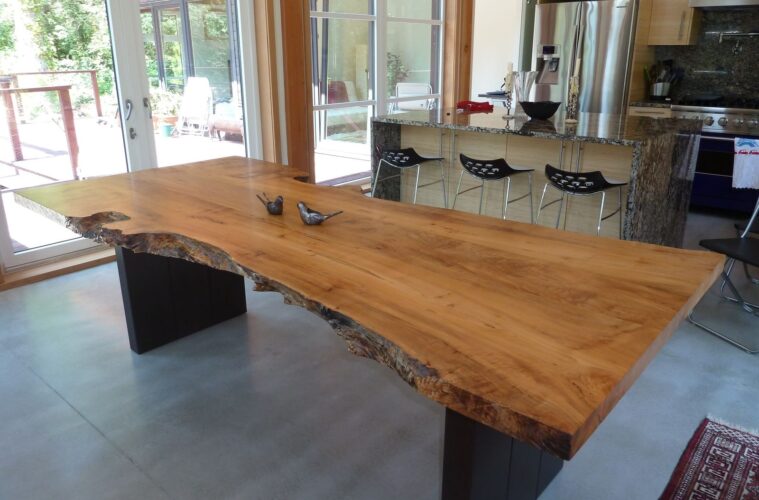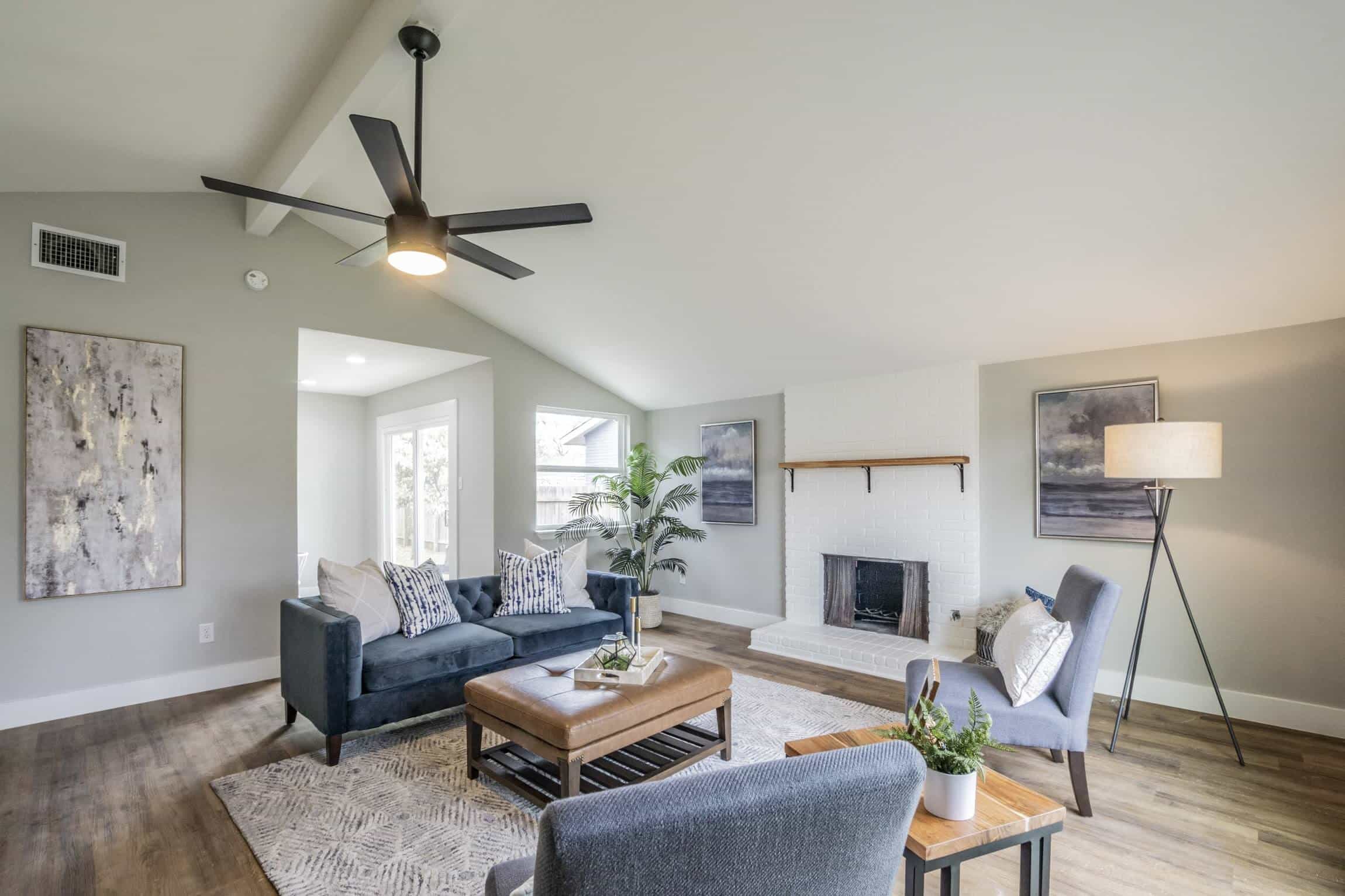In a world saturated with mass-produced furniture, the allure of authenticity and craftsmanship has surged to the forefront of design.
Amid this resurgence, custom live edge tables stand as remarkable exemplars of nature’s artistry and human ingenuity. These tables, born from the rich legacy of mid-20th-century design pioneers like George Nakashima, are more than mere furniture pieces; they are intricate narratives etched by time onto slabs of wood.
The marriage of raw, natural edges with masterful craftsmanship beckons us to delve into the captivating journey of creating functional yet breathtaking pieces that redefine the boundaries of design and bring the essence of the outdoors into our living spaces.
The Artistry Behind Live Edge Design
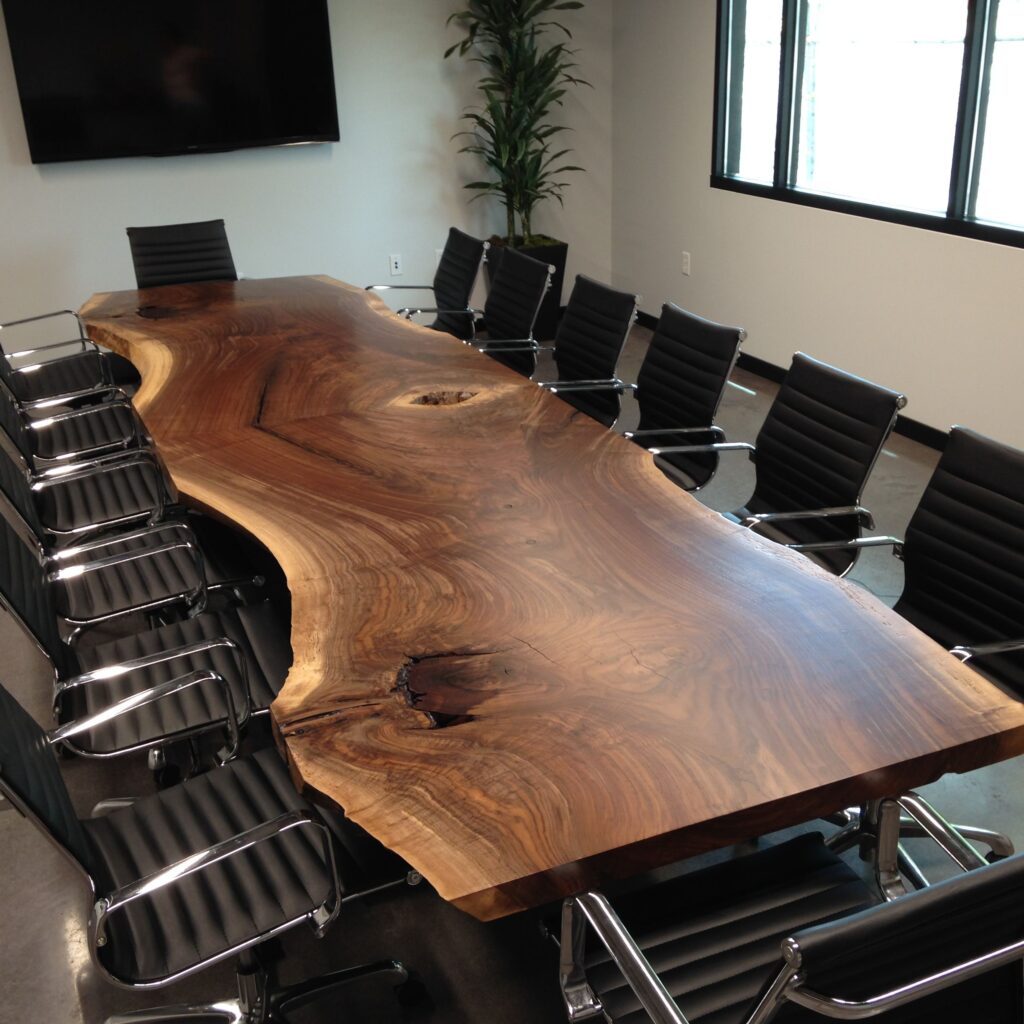
source: pinterest.com
At the heart of every live edge creation lies a perfect blend of nature’s spontaneity and artisanal precision. Each slab of wood, replete with its undulating edges, knots, and grain patterns, serves as a canvas that narrates the saga of its origin.
The beauty of live edge design rests in its authenticity: the irregularities and natural flaws of the wood are not seen as imperfections but as highlights that underscore the piece’s unique identity.
Artisans, with their honed skills, amplify this inherent beauty by shaping and finishing the wood in ways that honor its essence. This intricate dance between nature and craftsmanship ensures that every live edge piece isn’t just furniture, but a testimony to the artistry of both Mother Earth and human hands.
Crafting Process: From Tree to Table
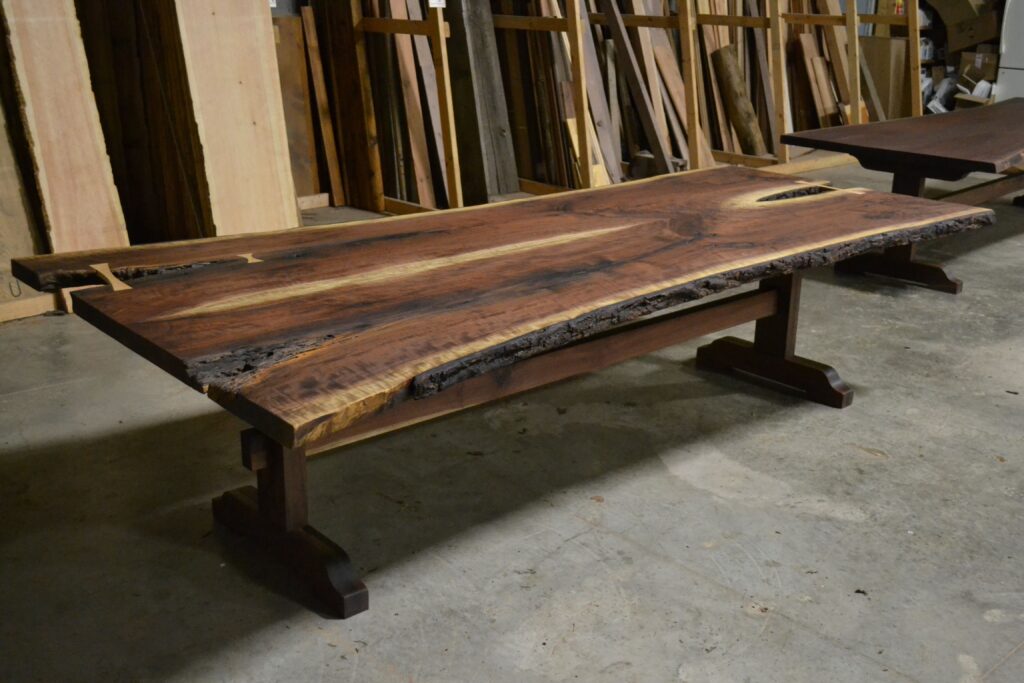
source: pinterest.com
The journey of creating a live edge piece is a meticulous one, rooted in reverence for nature and accentuated by artisanal prowess. Here’s a closer look at the process:
Selection of the Perfect Slab: Before anything else, the journey begins with choosing the right slab of wood. Depending on the intended piece’s function and aesthetic, craftsmen select from various species like walnut, cherry, or maple. Each wood type comes with distinct grains, colors, and durability.
Drying and Curing: Freshly cut slabs contain a high moisture content, which needs to be reduced to ensure the wood doesn’t warp or crack over time. The slabs are air-dried or kiln-dried, a process that can take anywhere from several months to a year, depending on the wood’s thickness and type.
Preservation of the Natural Edge: The defining characteristic of live edge furniture is the untouched, natural edge. To preserve this, craftsmen carefully strip away the bark while ensuring the underlying wood remains unscathed. This process requires a deft touch to retain the wood’s organic shape.
Shaping and Joining: After drying and preservation, the wood is then shaped into the desired form, whether it’s a table, bench, or any other furniture. If the design requires, multiple slabs might be joined together, using techniques like bowtie or butterfly joints, which not only secure the slabs but also enhance the piece’s visual appeal.
Sanding and Finishing: The piece is sanded to a smooth finish, removing any splinters or rough patches. Once smooth, finishes like oils, lacquers, or sealants are applied to protect the wood from external damage, enhance its natural color, and give it a polished look.
Quality Check and Final Touches: Every piece, before being deemed complete, undergoes a stringent quality check. Any imperfections or inconsistencies are addressed, ensuring the final product is not only stunning but also structurally sound.
Benefits of Custom Live Edge Furniture
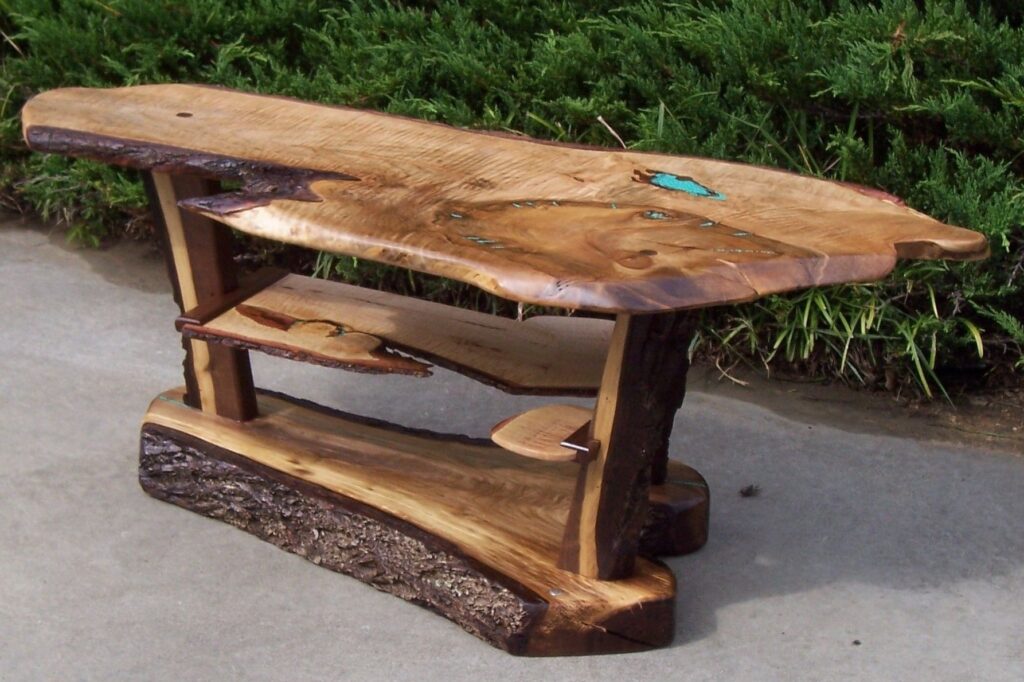
source: pinterest.com
The appeal of custom live edge furniture goes beyond mere aesthetics. While its distinct and organic look is undeniable, the range of benefits it offers encapsulates why it is increasingly sought-after in modern homes and offices:
Uniqueness: One of the primary draws of live edge furniture is its uniqueness. Since no two trees are identical, each piece carries a distinct grain pattern, knots, and natural edges, ensuring that every furniture item is a one-of-a-kind masterpiece.
Durability: Custom live edge pieces, often crafted from solid slabs of high-quality wood, are built to last. With the right care, these pieces can stand the test of time, often becoming family heirlooms passed down through generations.
Sustainability: Many artisans prioritize sustainable sourcing of wood, either by utilizing salvaged wood or sourcing from managed forests. This eco-friendly approach ensures minimal environmental impact, making live edge furniture a conscious choice for the environmentally aware.
Versatile Aesthetics: Whether your home carries a rustic charm, a contemporary edge, or a fusion of styles, live edge furniture can seamlessly fit in. Its natural elegance allows it to complement a wide array of interior designs.
Emotional Connection: There’s a profound sense of connection when one integrates elements of nature into their living spaces. Live edge furniture not only brings warmth and character but also fosters a deep-seated bond with the natural world.
Increased Value: Custom pieces, given their uniqueness and craftsmanship, often appreciate over time. Beyond its functional use, live edge furniture can be seen as an investment, potentially fetching higher values in future resale or auctions.
Artistic Statement: Beyond function, a live edge piece stands as an art piece. Its intricate details, natural flaws, and craftsmanship make it a conversation starter, elevating the aesthetic value of any room it graces.
Versatility in Home and Office Design
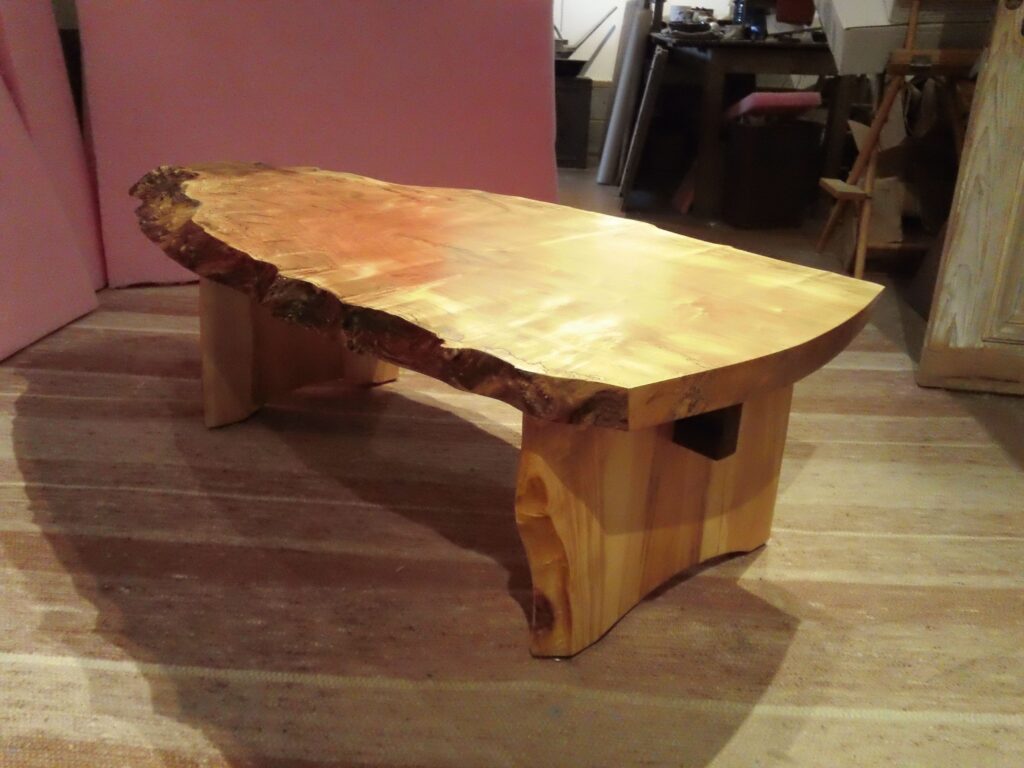
source: pinterest.com
Live edge furniture effortlessly bridges diverse design aesthetics, adapting to a spectrum of spaces. Its raw, organic allure seamlessly integrates with various styles—be it rustic, contemporary, or eclectic—making it an ideal focal point or subtle enhancement.
From coffee tables in living rooms to executive desks in offices, live edge designs prove their adaptability. They harmonize with materials like metal, glass, and fabric, and their introduction to workplaces fosters creativity and well-being.
Even outdoors, benches and garden tables crafted in this style add a touch of nature. In a world seeking authenticity, live edge furniture stands as a versatile design element that brings both beauty and function.
Care and Maintenance
To maintain the luster and longevity of these pieces, regular dusting with a soft cloth and occasional oiling (depending on the finish) is recommended.
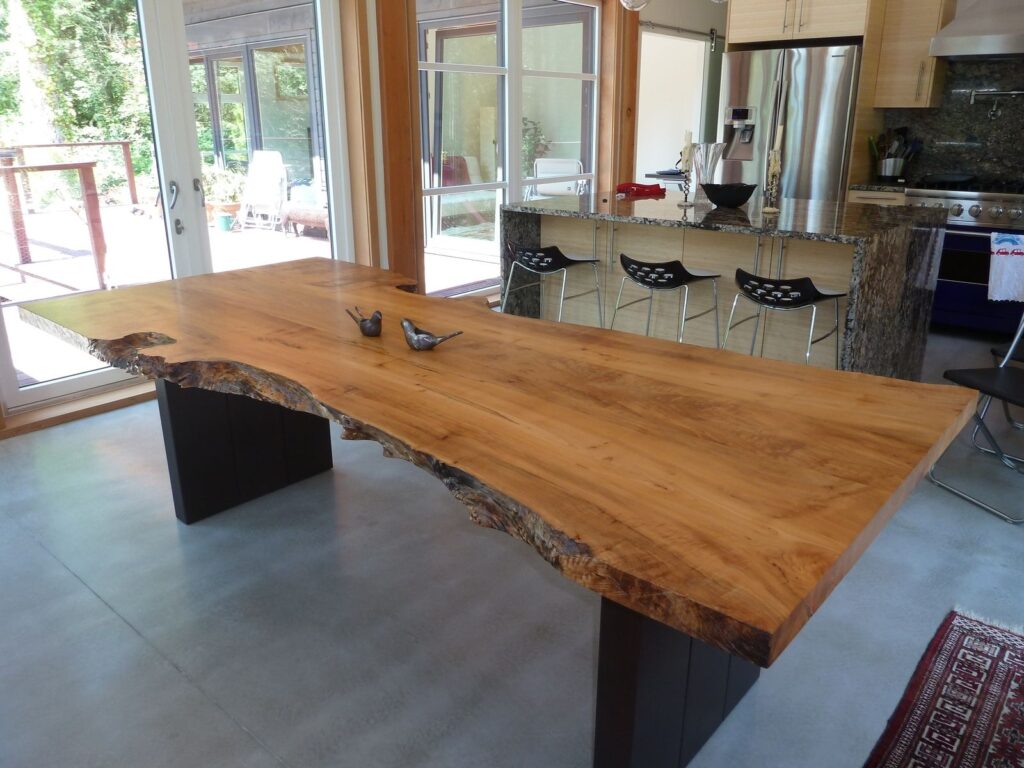
source: pinterest.com
Although robust, it’s essential to shield them from excessive moisture and direct sunlight. Treating any minor scratches or dents promptly ensures the piece remains timeless.
Conclusion
Custom live edge furniture encapsulates nature’s artistry and human craftsmanship, merging them into functional works of beauty. Each piece is a testament to the collaboration between the elements and skilled artisans.
As these pieces find their way into homes and offices, they not only enhance aesthetics but also foster a deeper connection to the environment. Live edge furniture is a timeless celebration of the elegance that emerges when nature and design intertwine.

